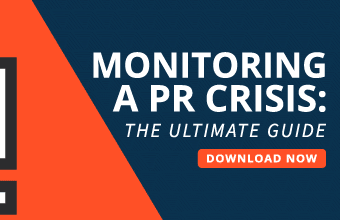Even people involved in emergency response who aren’t necessarily responsible for communicating with public audiences still need to be concerned with it. That’s because communication, including media relations, is central to any crisis. That’s the message from Thomas Mauro Jr., who trains companies and governmental agencies in emergency preparedness.
“Communications is always a component of every emergency,” Mauro said in an interview with CrisisResponsePro. “Media relations creeps into every crisis and you can either be in front or behind it.”
Mauro is vice president of law enforcement and preparedness at Vienna, Virginia-based CRA Inc., a national-security and emergency-management consultancy started in 1984. He is a CEM (certified emergency manager) and MEP (FEMA master exercise practitioner), in addition to having a master’s in criminal justice. CRA’s clients include the Port Authority of New York and New Jersey, Vermont Homeland Security, the Camden County (New Jersey) Police Department, and the Delaware Valley Intelligence Center. Mauro is located in its Cranford, New Jersey, office.
He works in the area he calls the “plan, train, exercise cycle.”
“What I do at CRA is provide the tools to help agencies and businesses plan, train, and exercise,” he says. “The key to crisis management is having a plan, a plan that everyone involved has been trained in and has practiced through some type of exercise. When a crisis occurs it’s important that we use the plan as we trained and exercised it. It’s great when companies write a plan but it’s critical to take that plan and use it and practice it and not just let it gather dust on the shelf.”
‘Hot Washes’
In addition to training, Mauro facilitates after-action reviews, or hot washes, with agencies after crises to determine what succeeded and what can be done better. “Communication is always the first in need of improvement,” he says. That includes both the mechanisms of communications (land lines, cell phones, email, text) and deciding what information is needed, when it’s needed, and who needs it. This could mean that one agency felt left out of the loop or “people feel they did not have the information they needed when they needed it,” he says.
That affects what the media is told, too. Interdepartmental or interagency communication has to work with the media-relations function. The agencies or company departments must first gather the facts and then distribute those facts to the media.
For someone who isn’t a media-relations expert, Mauro has a lot of experience in the area and strong opinions about it and how it affects emergency response.
“One of the keys to navigating the media during a crisis or emergency is for everyone involved to be on the same page,” he says. “We have to avoid a single agency going off script. And the script is accurate information that we are releasing to the public. Everyone needs to be informed of that and no one involved should add information to that script or make information up. Everyone involved needs to speak with one voice.”
An example of how not getting this right hurts communicating with the media and other audiences is the 2003 crash of Staten Island Ferry vessel Andrew J. Barberi, which killed 11 people and injured 165. Before facts could be verified, people working on the scene released information to the media, including the number of casualties, that was inaccurate.
“It was turned over to media, they turned it over to the public, and now there are a lot of questions about that information that was released without it being verified,” Mauro says.
Single Point of Contact
Mauro is a big believer in having a pre-selected and pre-trained single point of contact for the media (i.e., a public-information officer or other chief crisis officer), who takes the facts gathered at a joint-information center and distributes them to the press, usually in the form of a press release or press conference.
“It provides a single point of contact for the media and for the agencies when they need to update information and get it pushed out to the public,” he says. “A single point of contact is in my opinion hugely important to help manage information during an emergency.”
Mauro knows of where he speaks. For 20 years, he was a New York City cop, retiring as a captain. Much of his worked involved training. He was also executive officer of the 76th and 63rd precincts in Brooklyn and incident commander for the New York City borough of Staten Island.
In addition to working in the private sector, from 2007 to 2014 Mauro was the director of exercises and training for the Office of Emergency Preparedness and Response at the New York City Department of Health and Mental Hygiene.
Mauro says that even in the NYPD, though he wasn’t a public-information officer, he interacted with media, which informs his work today. “We needed to advertise our community-relations programs and also answer questions about incidents that occurred in the precinct,” he says. “So it was a very two–way relationship with the media.”
Two-Way Street
For Mauro, the only way to have that two-way street is to develop relationships with journalists before a crisis strikes. He gives an example from when he was still with the NYPD. He was being interviewed by a reporter he knew well from NY1, the local cable-news channel, about a fatal car crash in Brooklyn. When his answer to the first question was, in his own words, not very articulate, the reporter stopped the interview and had him re-do it, an unusual situation that came about only because of the pre-existing reporter-subject relationship.
In developing relationships with reporters, Mauro suggests asking them what information they would need in a crisis—an intriguing tip. “Have an open dialog about what they would be looking for during a crisis and come up with a strategy for how information can be communicated,” he says.
He points out another reason to develop relationships with reporters—so they trust your information.
“Most media outlets are now competing with social media,” he says. “And we all know how quickly social media pushes out information. The problem is it’s not always accurate. So if we can push out accurate information quickly to our media outlets, and they know the information’s reliable because they have a relationship with you, then they can better compete with social media.”
Of course, social media has positive uses in a crisis, Mauro says. Most importantly, Twitter feeds and Facebook pages must be monitored to understand how the public and other audiences are reacting to the emergency. And you must use social media as a channel to distribute your messages about the crisis—often accurate information to combat inaccurate rumors being bandied about in the same channel.
Mauro makes it clear how central communication—conveying truthful information—is in any crisis.
Thom Weidlich is Managing Director of CrisisResponsePro, a web-based collaborative software for crisis and litigation communications. To learn more or sign up please click here.











